

 Aromatized wine? Flavoured yeast? Luxury wines without oak?
Aromatized wine? Flavoured yeast? Luxury wines without oak?
On our trip to the southern Rhone Valley last week we tasted the unfermented grape juice from freshly harvested Grenache. It was delicious and sweet. But it didn’t taste like a wine, of course. A wine’s flavour is developed during the fermentation.
Aromas that are already present in the unfermented must are enhanced and new aromas appear. After the fermentation a wine has a variety of aromas reminiscent of fruits, berries, flowers and spices.
The yeast in itself does not add any aromas. Producers do talk about “neutral” yeast which would suggest that there is yeast that is not neutral. But the opposite of neutral yeast is not aromatic yeast. It is yeast that can reinforce a certain flavour that occurs naturally in the must.
A wine needs no added flavours and you are not allowed to add any. With one single exception.
Ageing a wine in oak barrels will bring oaky aromas to the wine (or by using other oak products like chips or staves). To get these aromas can be a reason to use oak.
But the producer can also use oak barrels because he wants to give the wine a slight oxidation, which facilitates the maturation process. The aromas are a “by-product”. Skilled winemakers can, however, avoid getting too evident oak aromas in the wine. They carefully choose their coopers and the toasting of their barrels.
More and more, we discover great red wines without any ageing in oak at all. It takes certain courage to make top wines without oak. Many consumers associate oak with quality wine. As if it were necessary for top-quality wines to be aged in oak. But if you have a wine with the original fruit intact in the glass, without any “flavouring”, the road between the grape juice and the finished wine doesn’t seem so long any-more. Oak is not sine qua non for top wines, although it sometimes can contribute.
Well, on to other things. The Brief this month will be a bit shorter than usual. It is peak season for wine tours so we have been very busy travelling in the vineyards (and with the finishing touches on a new manuscript on Champagne). So this month we have a bit fewer items in the Brief.
We have also finalised the last details on the winter and spring wine tours, South America, South Africa and of course Bordeaux. Take a look! Spring is a wonderful time to travel in the vineyards.
Britt & Per
PS: Recommend to your friends to read the Brief !
– – – – –
What’s on at BKWine Tours
- Douro Valley, October 12-16
- Chile and Argentina in South America, January 28 – February 12, 2017
- South Africa, February 24 – March 7, 2017, with Safari add-on and Golf add-on
- Champagne, April 19-23, 2017
- Bordeaux, May 3-7, 2017
For more information please contact us on email or on phone (we’re on French time), or go to our wine travel site on www.bkwinetours.com!
We also make custom designed wine tours – on-demand tours for you and a group of friends, for your company (maybe to scout new winegrowers?), for a special event… We can combine winery visits and wine touring with other activities: gastronomic workshops, visit to an oyster farm, truffles hunting, cheese making, and more. More info on the custom designed and bespoke BKWine wine tours and travel here!
Read our book(s)
We have written several wine books, nine at the last count. One of them has been translated to English; the others are (so far) only available in Swedish. This is the one that is available in English: Biodynamic, Organic and Natural Winemaking, Sustainable Viticulture and Viniculture
All our books are on wine, but on different subjects: wines of the Languedoc, wine growing and wine making, the wines of France, Tuscany, Bordeaux, Piedmont, Burgundy, Champagne. Several have won prestigious prizes and awards. Read more on our wine books.
From the World of Wine
In Brief
In short, news and stuff from the world of wine.
Pic Saint Loup is now a proper appellation
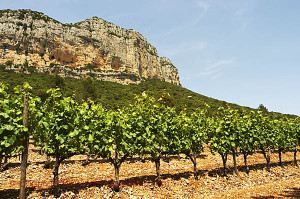 Pic Saint Loup Languedoc obtained its own appellation, AOP Pic Saint Loup, on the 7th of September. Not a day too early, according to many people. Pic Saint Loup, located about 20 kilometres north of Montpellier, was until now a sub-district of AOP Languedoc. For a long time it has been a dynamic district with a range of excellent producers and a generally high level of quality of its wines.
Pic Saint Loup Languedoc obtained its own appellation, AOP Pic Saint Loup, on the 7th of September. Not a day too early, according to many people. Pic Saint Loup, located about 20 kilometres north of Montpellier, was until now a sub-district of AOP Languedoc. For a long time it has been a dynamic district with a range of excellent producers and a generally high level of quality of its wines.
The new appellation Pic Saint Loup includes 17 villages and 1,000 hectares of vines and is valid for the red and rosé wines. The reds account for 90% of the production. The soil is mainly limestone. Some of our favourite producers in the Pic Saint Loup are Domaine Cazeneuve, Domaine Clos Marie, Mas Bruguières, Domaine de l’Hortus, Domaine Ermitage du Pic Saint Loup Bergerie du Capucin, Mas de Morties and Domaine Zumbaum Tomasi. Read more: pic-saint-loup.com.
Spring Bordeaux wine tour adds on to the long-distance winter tours
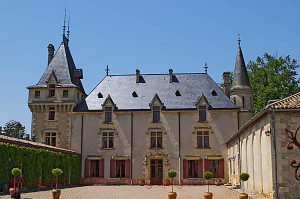 The just published wine tour to Bordeaux completes the winter and spring season wine tour program. The Bordeaux tour is a magnificent blend (a Bordeaux blend?) of luxury, gastronomy, and human scale family vineyards. For many wine lovers Bordeaux is the first port of call when venturing into wine country and this is an excellent way to do it.
The just published wine tour to Bordeaux completes the winter and spring season wine tour program. The Bordeaux tour is a magnificent blend (a Bordeaux blend?) of luxury, gastronomy, and human scale family vineyards. For many wine lovers Bordeaux is the first port of call when venturing into wine country and this is an excellent way to do it.
Earlier in the season we have the “long-distance” tours to Chile-Argentina and to South Africa. The South Africa wine tour can be extended with safari and/or golf. Read more on this below and all the details on https://www.bkwinetours.com.
Bayer buys Monsanto?
To combat pests, diseases, and to remove weeds belong to the everyday tasks of a farmer and a wine grower. There is a lot of money – and controversy – in pesticides so therefore the announcement that the German company Bayer is probably buying the American company Monsanto has caused a lot of speculations.
Bayer is a major pharmaceutical and agrochemical company while Monsanto is more specialized in the agrochemical business. Monsanto is the world’s largest producer of GM crops (and a hate object for a number of environmental organizations and activists in Europe) and manufactures the well-known Round-Up, an herbicide containing glyphosate, a substance that the EU is currently debating whether it should ban. Bayer produces a variety of insecticides, fungicides and herbicides. Read more: washingtonpost.com
New ideas in Beaujolais: villages on the label
The Beaujolais producers are keen to prove that they do not only make Beaujolais Nouveau wines. One way to do this, they believe, is to give consumers a more accurate geographical indication on the labels. Therefore, from 2016 a number of Beaujolais-Villages wines will be able to put their village name on the label, in the same way as some Côtes-du-Rhône-Villages. Currently only “cru” villages can put their name on the label.
In addition, 51 villages in the southern part of Beaujolais, will now be allowed to use the designation Beaujolais Pierres Dorées on their wines with ageing potential (thus not on their Beaujolais Nouveau). The area down here is often called Les Pierres Dorées (the golden stones) since many houses are built in a warm ochre coloured stone that looks golden in sunlight. The northern part of Beaujolais where the ten Beaujolais Cru are situated (Morgon, Moulin-à-Vent, etc.) has lately received a boost. We hope Beaujolais and Beaujolais-Village will soon be part of this success. The lovely fruit of Beaujolais wines is unique in the wine world. Read more: vitisphere.com
New rules in Tokaj: puttonyos no more
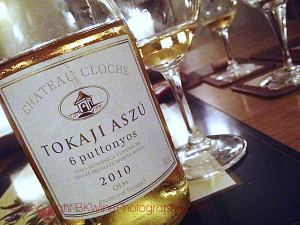 An era is gone in the Hungarian wine region of Tokaj. Many of you probably remember Tokaj Aszú with its different number of puttonyos. It could be 3, 4, 5 or even 6. The more puttonyos, the higher the sugar content in the wine. Now Tokaj has simplified the classification of its wines and has, without further ado, removed the puttonyos indication.
An era is gone in the Hungarian wine region of Tokaj. Many of you probably remember Tokaj Aszú with its different number of puttonyos. It could be 3, 4, 5 or even 6. The more puttonyos, the higher the sugar content in the wine. Now Tokaj has simplified the classification of its wines and has, without further ado, removed the puttonyos indication.
The sweetest Tokaj wine is Eszencia. It is sweeter than most in the wine world with at least 450 grams of residual sugar per litre. The alcohol content is a minimum of 1.2% and a maximum of 8%. It would not even be considered wine under normal rules but they have no doubt a derogation. Under the new rules, the second sweetest wine is Aszú with at least 120 grams of residual sugar and at least 9% alcohol. The very special Tokaj wines called szamorodni, fordítás and máslás all remain in both dry and sweet versions. The dry has more than 9 grams of residual sugar and the sweet at least 45 grams. In Tokaj you can also make late harvest wine and dry white wines. If you get the chance, try the wines from Tokaj, sweet or dry, they are superb and unusual. We thank Attila Bors who made us aware of these new rules. Attila imports Hungarian wines to Sweden through Bors & Bor Trading.
Happy wine growers in the southern Rhone Valley: 2016 will be excellent
The harvest is in full swing in the southern Rhone Valley and the growers are very happy. “I have rarely seen so fine and healthy grapes,” says Bernard Duseigneur at Domaine Duseigneur, a domain with vineyards on both sides of the river, in the Châteauneuf-du-Pape, Listrac and Côtes du Rhône Laudun.
The grapes are very small and concentrated with high sugar levels. It has been a dry and hot summer in southern Rhône without a drop of rain in two and a half months. In addition the mistral wind increases the sugar concentration in the grapes. We also tasted the young 2016 at the Domaine Montirius in Vacqueyras and we can confirm that this will be a great vintage.
Red wine without malo from Gaillac – a challenging taste
We tasted an unusual wine the other day. It came from the Domaine du Moulin in Gaillac, it was from 2015 and it was a completely new cuvee, still ageing in oak barrels. (A very interesting producer by the way.) The grapes were 60 % Tannat, 30% Syrah and 10% of the local grape Braucol. The grapes came from a clay/limestone soil with a little bit of gravel. And what was so unusual? It was the fact that the wine had not yet undergone the malolactic fermentation. You don’t often get to taste red wines without malolactic fermentation and it is not always easy. The wines can easily feel a bit unbalanced.
The malolactic fermentation is a second fermentation, or to be more precise, a bacterial process, that more or less all red wines go through. Either the process is completely natural or the producer will help nature by adding lactic acid bacteria to the wine that will trigger the process. The malolactic fermentation converts the malic acid in the wine into lactic acid and also lowers the total acid in wine. It also stabilizes the wine and gives it a rounder and fuller mouth feel. I tasted the wine blind without knowing what it was. I noted that the wine had a nice, juicy fruit and good tannin structure but also that the acidity was unusually high. A guess is that the wine will benefit from doing the malolactic fermentation which it also did, later on. Domaine du Moulin has promised to send a bottle to show us the result after “malo”. To be continued. (Picture: the white wine from the same producer.)
Guest of Argentina’s ambassador and minister of tourism
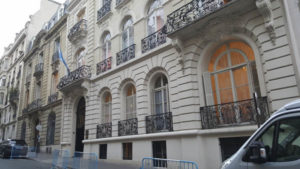 It is not every day one gets invited over to the embassy of Argentina, or any other country (although I was at the Portuguese ambassador’s residence in Prague earlier this year). Of course one goes come rain come shine. In addition to pleasant company one can count on great wines and delicious food. Well, it was not just me who was invited over. It was an Argentinian evening arranged in connection with the big tourism event TopResa in Paris, so a few other tourism people were there too. But I guess it must mean that we do something right with our wine tours to Argentina. Read more (and watch the video) on BKWine’s Travel Blog: Meeting with the Ambassador of Argentina and the Minister of Tourism.
It is not every day one gets invited over to the embassy of Argentina, or any other country (although I was at the Portuguese ambassador’s residence in Prague earlier this year). Of course one goes come rain come shine. In addition to pleasant company one can count on great wines and delicious food. Well, it was not just me who was invited over. It was an Argentinian evening arranged in connection with the big tourism event TopResa in Paris, so a few other tourism people were there too. But I guess it must mean that we do something right with our wine tours to Argentina. Read more (and watch the video) on BKWine’s Travel Blog: Meeting with the Ambassador of Argentina and the Minister of Tourism.
Features
Features that we have published during the past month, with lots of reading for you.
Delightful wines from Wrath Vineyards
 Last month we published an article about Wrath Wines in California. This month LM Archer is back with a follow-up where she tastes the wines in their range. “Wrath Wines boasts a prodigious assortment of wines, wines borne of an epic knack for experimentation-gone-right by ‘grand alchemist’ Sabrine Rodems and owner Michael Thomas, with assistance from their merry band of winery cohorts. Wrath Wines include three categories: the Ex Anima Series, the Wine Maker Series, and the Single Vineyard Series.
Last month we published an article about Wrath Wines in California. This month LM Archer is back with a follow-up where she tastes the wines in their range. “Wrath Wines boasts a prodigious assortment of wines, wines borne of an epic knack for experimentation-gone-right by ‘grand alchemist’ Sabrine Rodems and owner Michael Thomas, with assistance from their merry band of winery cohorts. Wrath Wines include three categories: the Ex Anima Series, the Wine Maker Series, and the Single Vineyard Series.
Read more on these wines in guest writer LM Archer’s article on BKWine Magazine: Delightful wines from Wrath Vineyards.
Read the first part with the interview with the winemaker here: Love in the wine at Wrath Wines in Monterey.
Focus on quality wines and tourism at a new Okanagan winery, Indigenous World Winery
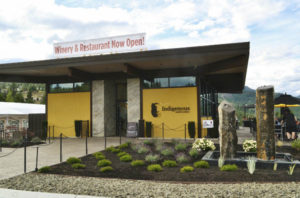 Indigenous World Winery opened its doors earlier this year. It is located on the west shore of the Okanaga Lake in the Okanaga Valley, a good three hour’s drive east of Vancouver. It is only the second aboriginal owned winery in the Okanagan. Although the winery was only recently opened for visits they have been making wine for a few years and have a range of bottlings back to 2012 to propose to visitors. With the new opening they are putting a lot of effort into a becoming top-notch wine tourism destination.
Indigenous World Winery opened its doors earlier this year. It is located on the west shore of the Okanaga Lake in the Okanaga Valley, a good three hour’s drive east of Vancouver. It is only the second aboriginal owned winery in the Okanagan. Although the winery was only recently opened for visits they have been making wine for a few years and have a range of bottlings back to 2012 to propose to visitors. With the new opening they are putting a lot of effort into a becoming top-notch wine tourism destination.
BKWine Magazine Guest Writer Dee Newman, a freelance wine writer, was at the opening and talked to the owners. Read more: Focus on quality wines and tourism at a new Okanagan winery, Indigenous World Winery.
An introduction to Piedmont with three recommended producers
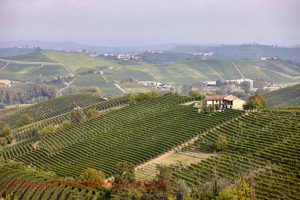 “For people with a strong interest in wine Piedmont is often synonymous with quality and elegance and long-lived wines from the grape Nebbiolo. But compared to Chianti Piedmont is far less famous and for many the sparkling wine Moscato D’Asti is probably the only contact with the region. Piedmont is so much more and offers a lot to discover. Let’s start with a brief review of the landscape.”
“For people with a strong interest in wine Piedmont is often synonymous with quality and elegance and long-lived wines from the grape Nebbiolo. But compared to Chianti Piedmont is far less famous and for many the sparkling wine Moscato D’Asti is probably the only contact with the region. Piedmont is so much more and offers a lot to discover. Let’s start with a brief review of the landscape.”
Read the continuation of BKWine reporter Tobias Karlsson’s article on BKWine Magazine: An introduction to Piedmont with three recommended producers.
Wine tours
Some information about current and future wine tours with BKWine.
South Africa: a wine country with great variety
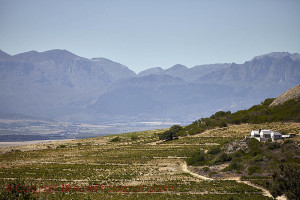 South Africa’s wines have had great success in various parts of the world. However, it is a wine country that does not rest on its laurels. The producers are constantly seeking new challenges, new districts and new varieties. Down on the south coast the climate is cool and this suits some varieties such as sauvignon blanc and pinot noir while further north in hot Swartland they specialise in wines varieties that we usually find in the French Rhone Valley.
South Africa’s wines have had great success in various parts of the world. However, it is a wine country that does not rest on its laurels. The producers are constantly seeking new challenges, new districts and new varieties. Down on the south coast the climate is cool and this suits some varieties such as sauvignon blanc and pinot noir while further north in hot Swartland they specialise in wines varieties that we usually find in the French Rhone Valley.
What has changed in South Africa in recent years is the wide variety of flavours and styles available now. It is no longer so that you just have one kind of South African (if it ever were). This is one very good reason to go here. Whether you want a classic Cabernet Sauvignon from Stellenbosch, an exciting Pinotage from Franschhoek or “natural”, no-sulphur wines from Swartland you can find your favourite here. The wine tour to South Africa starts in late February.
(It is also possible to extend the tour with golf or with a safari.)
Bordeaux, both classic and modern
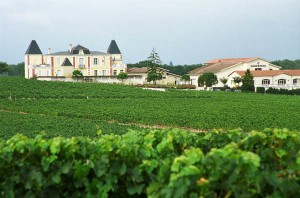 Bordeaux occupies a special place in many wine lovers’ heart. It is the great classic and in many ways a reference for a high quality red wine. Here you find the famous chateaux with Grand Cru Classé status, real fairy-tale castles, built in the 18th and 19th century. The cellars are obviously modern and sometimes designed by world-renowned architects who challenge each other in creativity.
Bordeaux occupies a special place in many wine lovers’ heart. It is the great classic and in many ways a reference for a high quality red wine. Here you find the famous chateaux with Grand Cru Classé status, real fairy-tale castles, built in the 18th and 19th century. The cellars are obviously modern and sometimes designed by world-renowned architects who challenge each other in creativity.
Bordeaux is big, over 100 000 hectares and has a lot of variation. You will find a variety of wine styles. The prices of the wines vary enormously too. Which means that you should definitely not be discouraged when you read about what some of the most famous wines cost. The most expensive wines are now pure luxury products. These can largely and safely be ignored by the wine-lover. There is so much more to discover that is not unattainable luxury, and you will do that on our wine tour in Bordeaux when it is basking in spring sunshine. But we will of course have some prestige and luxury too. We are, after all, in Bordeaux. The wine tour to Bordeaux takes place in May.
Don’t be an egoist! Share with your friends and other wine enthusiasts! Forward the Brief to your friends! Suggest that they sign up for a free subscription !
© Copyright BKWine







